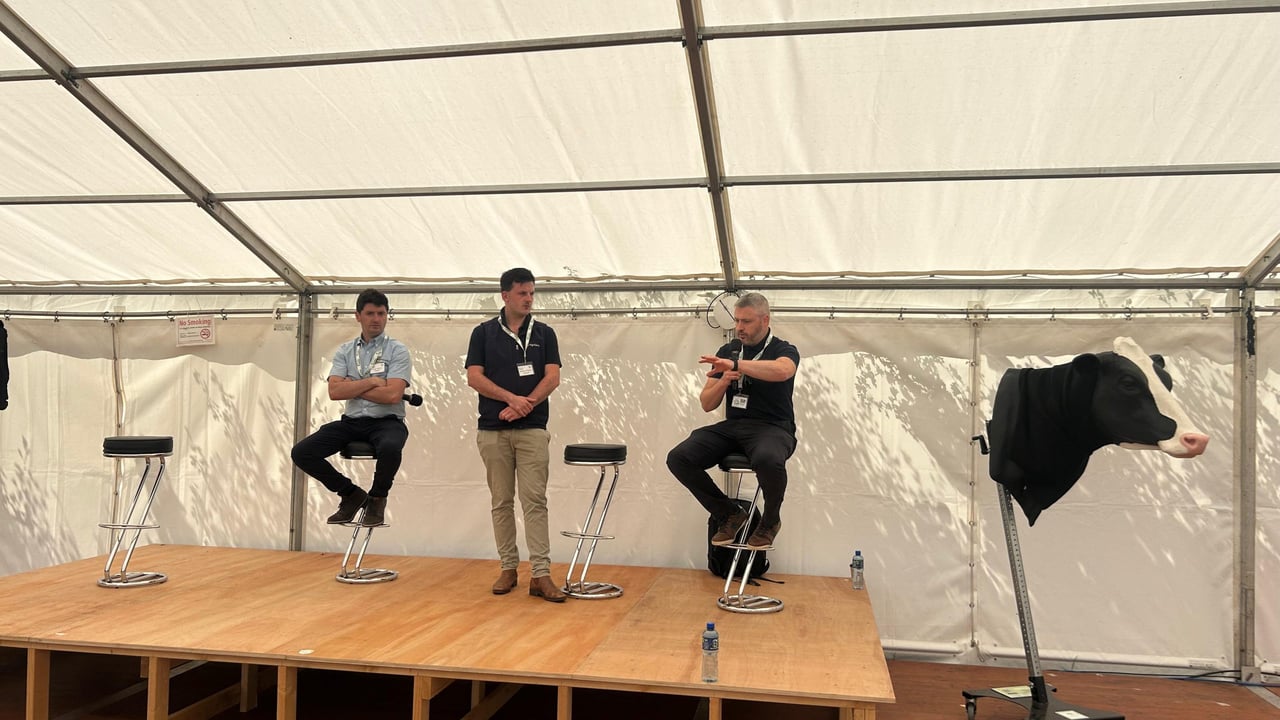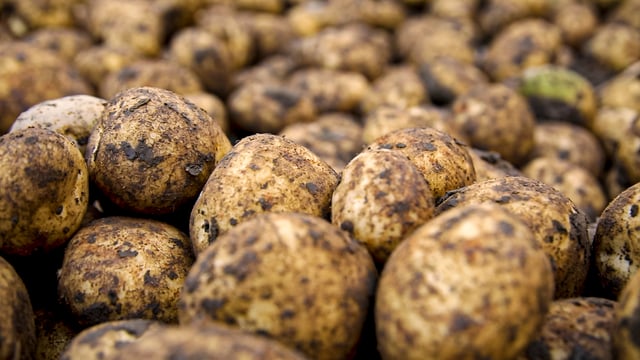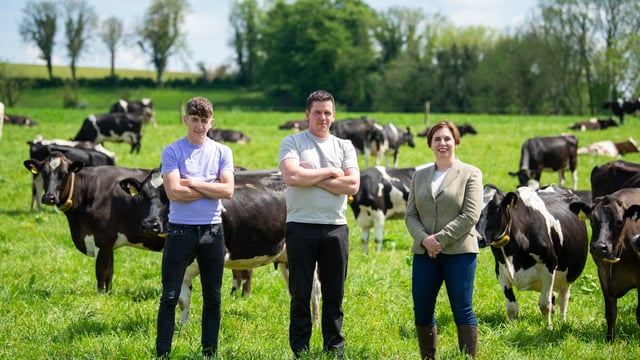Exploring carcass quality with dairy-beef animals
An interactive panel discussion led by Agriland's technical beef journalist Breifne O'Brien, explored the dairy-beef trade at Moorepark's Dairy Open Day.
O'Brien hosted Dawn Meats group development manager, Paul Nolan, Teagasc livestock systems research officer, Dr. Nicky Byrne and Irish Cattle Breeding Federation's (ICBF) Chris Daly.
At the discussion, the group had two carcasses of different grades on display in a fridge for the large crowd to view.
Nolan told the audience how one of the carcasses was meeting specification, while the other carcass was not, he added that this was becoming a more common problem with dairy animals.
He said that the out-of-specification carcass displayed a poor loin which would struggle to produce two steaks.
He said: "Nine out of 10 times the lady of the house will choose the product, going out with a budget looking for good quality and good value.
"If a steak looks small and miserable on a tray she will pass over, but if it's too big, it's too expensive and she will wonder what she can get for better value whether it be chicken or mince."
He added that to meet the Irish premium standards, a carcass must be the correct size, ranging between 280-380kg.
The panel discussed problems with over heavy carcasses in the past, however they stated that some of the carcasses coming in off dairy-beef now can be too small.
Daly told the crowd that farmers can achieve the "best of both worlds" using proper breeding and genetic plans.
He said farmers can improve their genetic merit through the proper use of the dairy beef index (DBI) as well as the beef sub index, helping to choose bulls to produce high commercial beef value (CBV).
Daly stated that there has been a reduction of over 100,000 male dairy calves in exchange for beef breeds particularly due to the uptake of sexed semen.
He added that farmers can use these tools to transition from thinking of beef calves as a by-product to using them as an opportunity.
Dr. Byrne went on to highlight the management needed when unlocking the potential of the dairy-beef market.
He reminded farmers to pick breeds that suit their herds in terms of gestation length and calving difficulty.
He also demonstrated the best place to inject cows from an economical point of view, saying a palm up from the shoulder blade and a palm down from the top of the neck will create the perfect triangle for where to inject.
He pointed out that injections in other areas can be costly if a broken or dirty needle causes an infection which will need to be cut out of the carcass eventually.
He said an area on the neck worth €5/kg is better than an area on the rump worth €15/kg.
Nolan added at the end of the discussion that he remains confident in a steady market for dairy to beef systems.
He said that there is currently a worldwide deficit in terms of supply and demand, and despite high costs, he feels prices will hold as scarcity kicks in.





